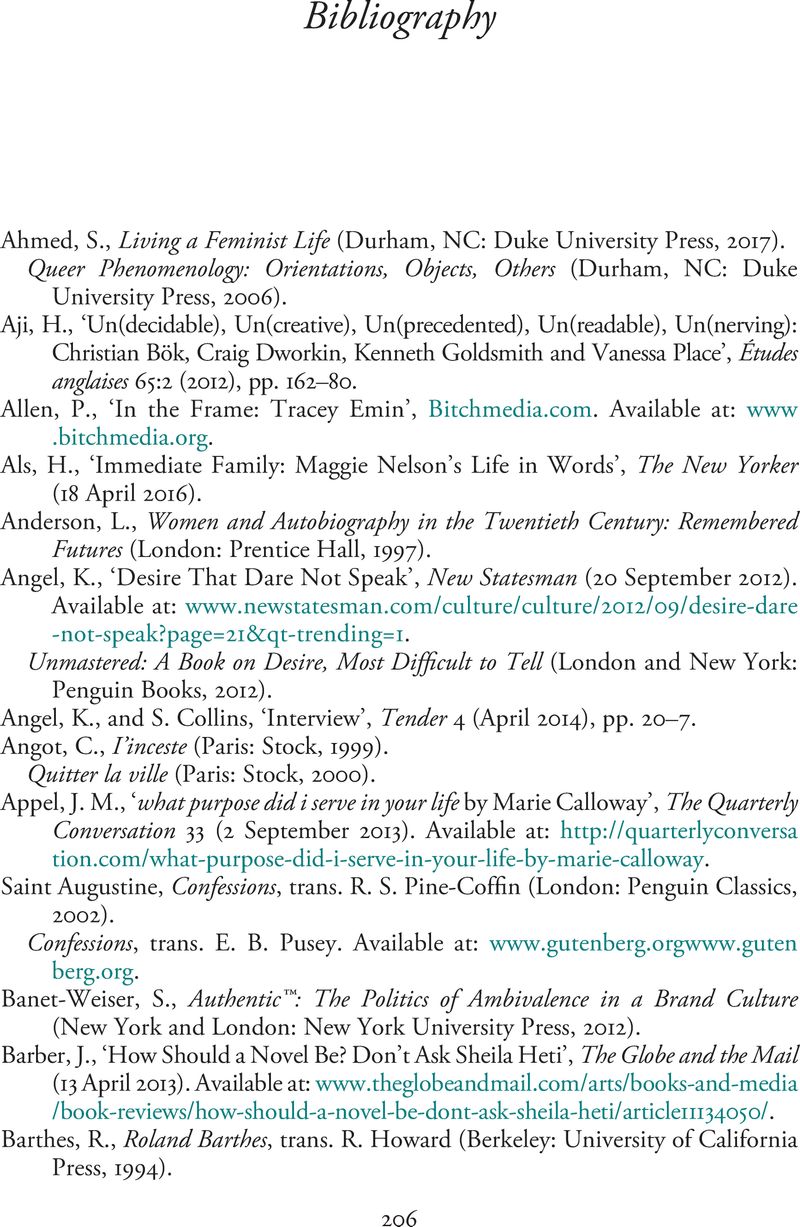Book contents
- Contemporary Feminist Life-Writing
- Cambridge Studies in Twenty-First-Century Literature and Culture
- Contemporary Feminist Life-Writing
- Copyright page
- Dedication
- Contents
- Acknowledgements
- Introduction
- Chapter 1 Autobiography as Feminist Praxis
- Chapter 2 Ugly Audacities in Auto/biography
- Chapter 3 Stripping Off for the First Time
- Chapter 4 Breaking the Binaries
- Chapter 5 The Dangers of Audacity
- Afterword
- Bibliography
- Index
- References
Bibliography
Published online by Cambridge University Press: 31 March 2020
- Contemporary Feminist Life-Writing
- Cambridge Studies in Twenty-First-Century Literature and Culture
- Contemporary Feminist Life-Writing
- Copyright page
- Dedication
- Contents
- Acknowledgements
- Introduction
- Chapter 1 Autobiography as Feminist Praxis
- Chapter 2 Ugly Audacities in Auto/biography
- Chapter 3 Stripping Off for the First Time
- Chapter 4 Breaking the Binaries
- Chapter 5 The Dangers of Audacity
- Afterword
- Bibliography
- Index
- References
Summary

- Type
- Chapter
- Information
- Contemporary Feminist Life-WritingThe New Audacity, pp. 206 - 221Publisher: Cambridge University PressPrint publication year: 2020



